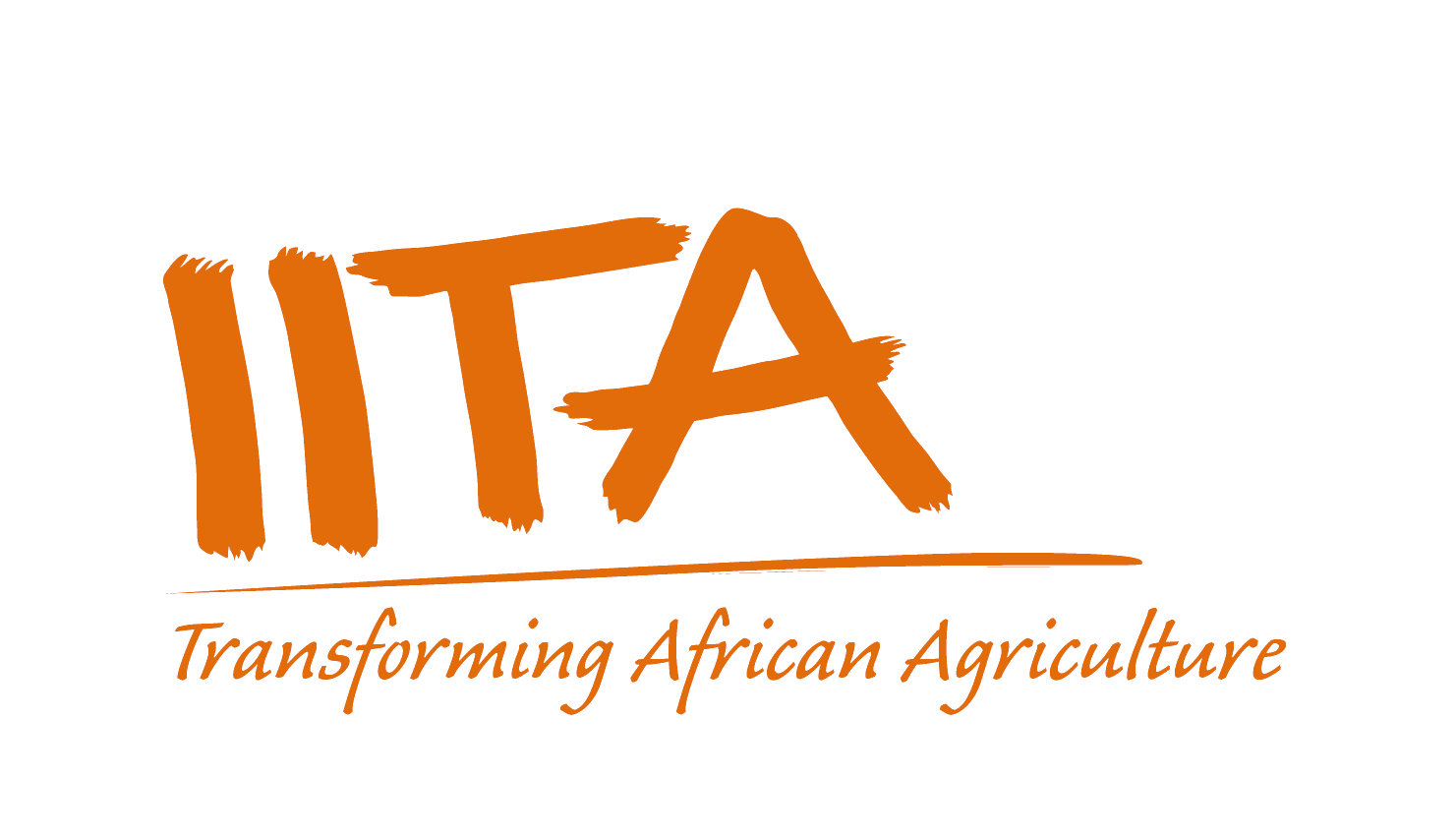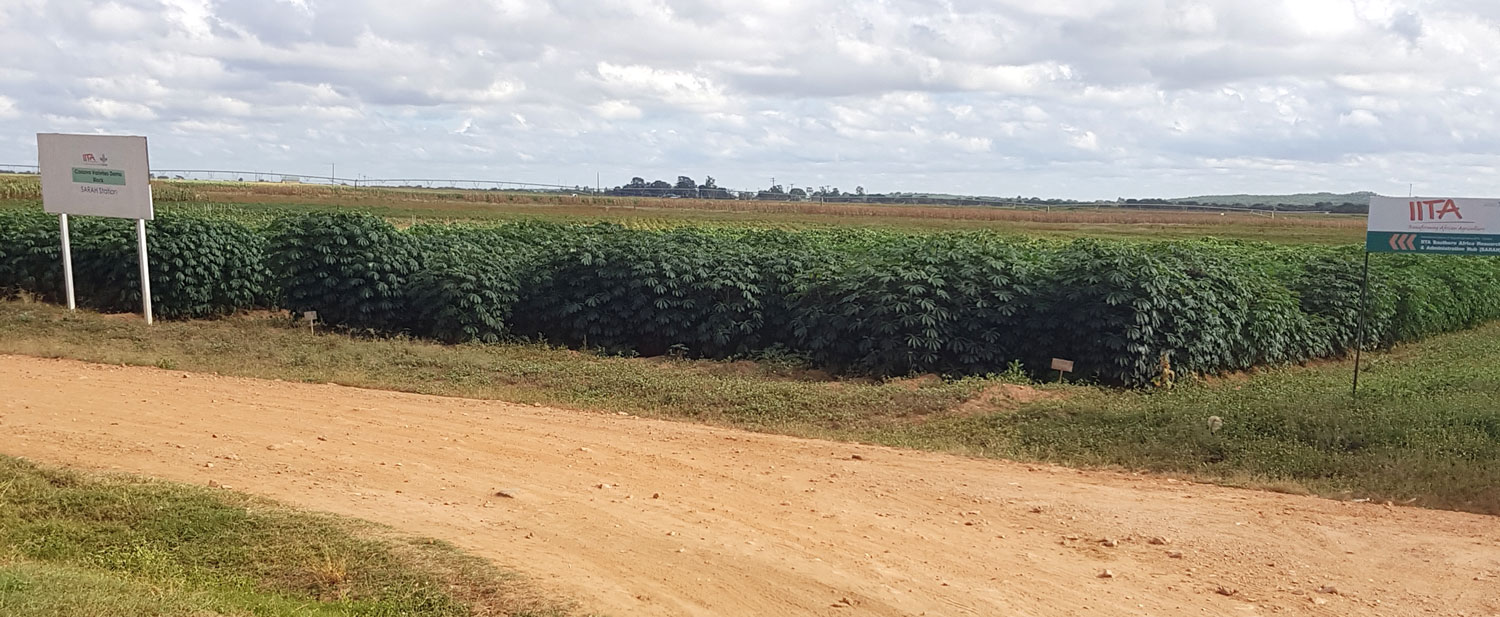Cassava seed-bulking farms
Summary
Cuttings from cassava stems are the most commonly used planting material by African farmers because this kind of seed can be gathered from previous cropping phases and thereby allows to cultivate large areas of land. Distribution of cassava stem cuttings to growers is however problematic because the materials rapidly lose sprouting vigor when stored, and their sheer volume and weight drive up transport costs. These factors are severely limiting the supplies of improved, disease-resistant cassava planting material across major growing regions, which especially affects communities with poor road connectivity in remote rural parts of African countries. Smallholder farmers living in expansive agricultural landscapes of Africa can get much better access to high-quality cassava stem cuttings through seed-bulking farms that are scattered across communities. This approach allows to multiply planting materials closer to the fields where the crop is cultivated, thereby bringing down costs of production and transport, and avoiding over-reliance on seed companies and institutions that have limited geographical coverage. Seed-bulking farms can greatly accelerate the dissemination of improved cassava varieties and make planting materials available to farmers that are free of pests and diseases. This approach for multiplication of cassava cuttings offers opportunities for community-based enterprise development, and will enhance incomes and productivity of farmers and processors.
About the Solution
Cassava seed-bulking involves multiplication of stem cuttings from seed tubers or cuttings in a controlled environment which allows to obtain true-to-type planting material that is free from infestations by pests and diseases. One hectare of cassava seed farm can produce enough cuttings to plant 8-12 hectare of land at the recommended stem size of 25-30cm, thus permitting high multiplication ratios. Seed-bulking farms allows producers to obtain hardened planting materials closer to the fields, and are particularly effective for releasing and maintaining improved varieties, and controlling pest and disease infestations. The improvement in availability, access and quality of stem cuttings that can be realized by decentralizing its production make it possible to distribute large amounts in a short period of time at the start of rainy seasons. Reductions of transport times achieved by setting up cassava seed-bulking farms across communities that live in expansive regions hugely benefit the survival rates of planting materials and crop health throughout its growth, which gives rise to higher yields and resilience of the food crop.
Seed-bulking farms for cassava as a means to supply quality planting materials is suitable for all major growing areas in Africa because it can be implemented with simple facilities and limited capital investments. Individual farmers, community-based organizations and seed companies can set it up close to the fields where farmers cultivate the crop and bring early generation planting materials within reach of remote rural communities that rely on cassava for food and income.
The use of seed tubers and cloning methods for bulking of cassava cuttings in rural communities makes that all varieties can be multiplied through this technology, including hybrid types developed through advanced breeding. High-yielding, disease-resistant and bio-fortified lines of cassava are the most appropriate for seed-bulking farms because distributing such kind of planting materials creates large impacts on productivity and incomes along the food value chain.
To start a cassava seed-bulking farm, a small number of the certified cuttings or seed tubers have to be obtained from varieties that are suitable for specific conditions in growing areas and meet preferences of consumers. Cassava seed-bulking should be done on farmer fields that are fertile and away from crop stands that are heavily infested by diseases and pests in order to promote multiplication and seed quality. In places where this is not possible the use of specialty blended fertilizers and chemical control agents is required for producing high quality planting materials. Seed-bulking farms should be kept free of weeds to promote growth. Advanced set-ups that include assets like drip irrigation and other mechanized tools can shorten harvesting cycles and reduce labor costs. Under optimal crop and soil management it is possible to multiply cassava cuttings in 6 months’ time when seed tubers are used as starter, and after 8 to 10 months in case of unrooted stems. Seed-bulking farms have to be located within communities according to the size of the cultivation area and road connectivity, usually having sites for dispersed at distances of 1 to 20 km.
Commercialization
Commercially available
Solution Images
Institutions

Accompanying Solutions
Disease resistant cassava varieties, Golden cassava varieties (Vitamin A fortified), Cassava varieties with high dry matter and starch content

